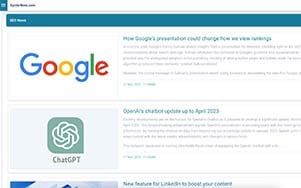What are broken links and why are they important for SEO?
Broken links, also known as dead links or 404 errors, are hyperlinks that lead to web pages or resources that no longer exist. They are important for SEO because they can negatively impact user experience, website credibility, and search engine rankings. When search engine crawlers encounter broken links, they may interpret them as a sign of poor website quality, leading to lower rankings in search results.
How do broken links affect website analytics?
Broken links can have several negative effects on website analytics:
1. Increased Bounce Rate: When users encounter broken links, they are more likely to leave the website immediately, resulting in a higher bounce rate. This can signal to search engines that the website may not be providing valuable or relevant content.
2. Decreased Session Duration: Users who encounter broken links are less likely to spend time exploring the website, leading to shorter session durations. This can negatively impact metrics such as average session duration and pages per session.
3. Impaired Conversion Tracking: Broken links can disrupt the user journey and prevent users from completing desired actions, such as making a purchase or filling out a form. This can make it difficult to accurately track and measure conversions.
How do broken links impact search engine rankings?
Broken links can negatively impact search engine rankings in several ways:
1. Crawl Efficiency: Search engine crawlers allocate a finite amount of resources to crawl and index websites. When crawlers encounter broken links, they waste valuable resources that could be better spent indexing valid content, potentially leading to incomplete or delayed indexing of your website.
2. User Experience Signals: Search engines prioritize websites that provide a positive user experience. Broken links detract from the user experience by leading users to dead ends and disrupting their browsing session, which can result in lower rankings.
3. Link Equity Loss: Broken links disrupt the flow of link equity (also known as link juice) throughout your website. When a page containing inbound links becomes inaccessible due to a broken link, the link equity associated with those inbound links is lost, potentially impacting the authority and ranking power of your website.
But fear not, because fixing broken links doesn't have to be a daunting task. With a little know-how and some simple tools, you can breathe new life into your website and ensure that your users never have to encounter a broken link again.
So, how exactly do you go about fixing broken links? Let's break it down.
The first step is to identify the broken links on your website. There are several tools available that can help you do this, such as Google Search Console or online link checkers. Once you've pinpointed the broken links, it's time to roll up your sleeves and get to work.
In some cases, fixing broken links is as easy as updating the URL to point to the correct destination. This might involve updating the link manually in your website's content management system or editing the HTML code directly.
But what about those pesky broken links that lead to pages that no longer exist? Fear not, because there's a solution for that too. You can create custom 404 error pages that provide helpful information to users and guide them back to the main navigation of your site. This not only improves the user experience but also helps prevent users from bouncing off your site altogether.
Of course, prevention is always better than cure when it comes to broken links. That's why it's important to regularly audit your website for broken links and fix them as soon as they're discovered. By staying proactive and vigilant, you can ensure that your website remains a seamless and enjoyable experience for your users.
So the next time you come across a broken link on your website, don't panic. With a little patience and persistence, you can fix it in no time and keep your website running smoothly for years to come. After all, in the digital world, every click counts.
What are some best practices for fixing broken links?
Regular Monitoring: Routinely scan the website for broken links using automated tools or manual checks to identify and address issues promptly.
Redirects: Implement 301 redirects for broken links to point users to relevant or updated content, preserving link equity and improving user experience.
Internal Linking: Ensure consistent internal linking practices and update internal links whenever content or URLs change to prevent broken links from occurring.
Link Maintenance: Regularly review and update external links to ensure they point to valid and relevant resources, minimizing the risk of broken outbound links.
In summary, fixing broken links is essential for maintaining a positive user experience, preserving SEO performance, and enhancing website credibility. By using the best tools available and following best practices for link maintenance, businesses can mitigate the negative impacts of broken links and ensure their websites remain accessible and user-friendly.










